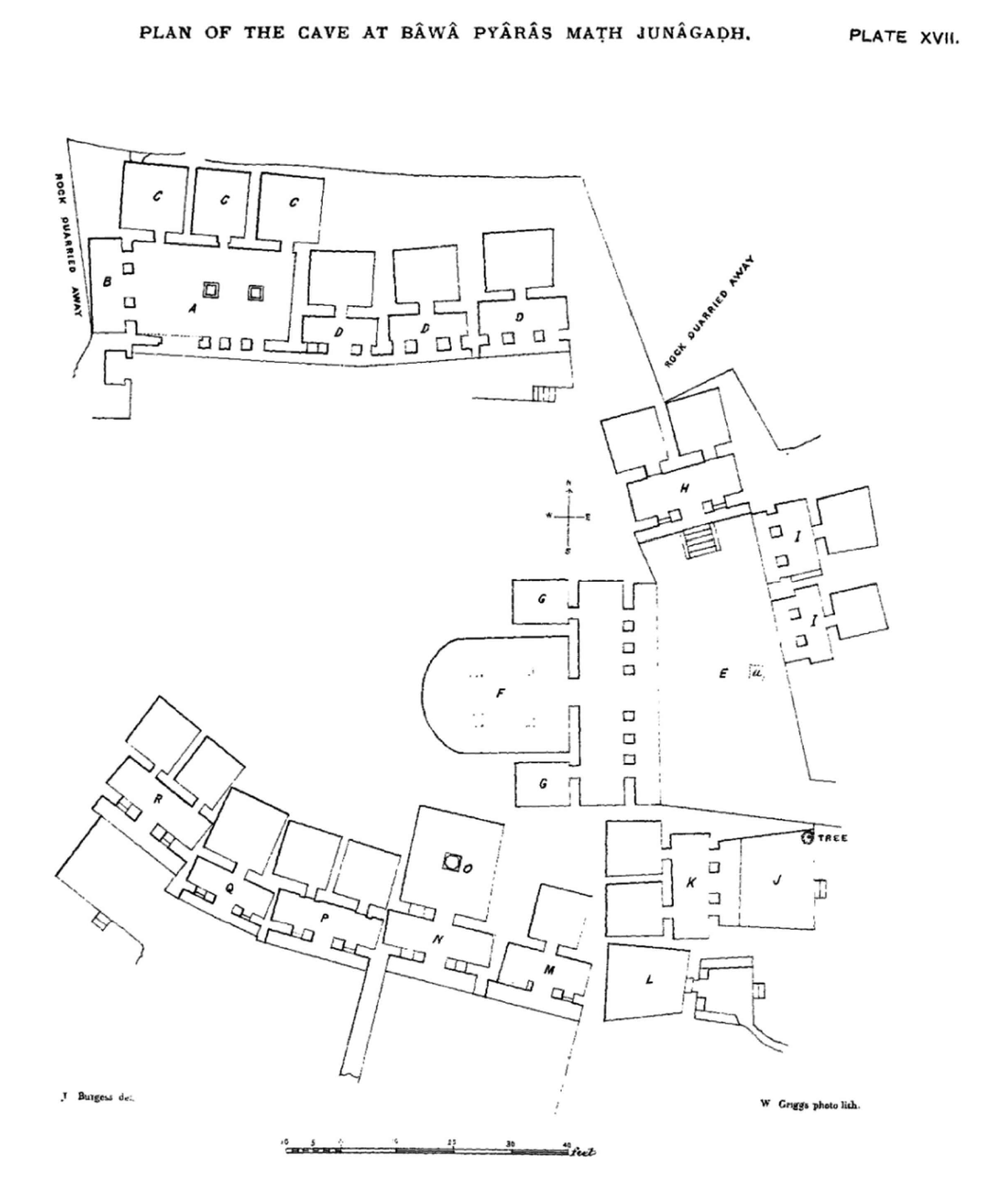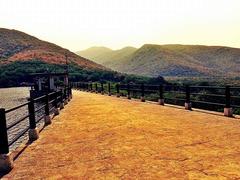
Visiting Baba Pyare Caves: History, Tickets, and Travel Tips
Date: 01/08/2024
Introduction
The Baba Pyare Caves, also known as Bava Pyara Caves, are a historical marvel nestled in Junagadh, Gujarat, India. These ancient rock-cut caves, dating back to the 1st–2nd century A.D., showcase the architectural brilliance and religious diversity of ancient India. Constructed during the Satavahana regime, the caves are part of the Junagadh Buddhist Cave Groups and are a testament to the patronage of Buddhism by the Satavahanas. Over time, the caves also became a sanctuary for Jain ascetics, reflecting a unique cultural and religious transition (Vargis Khan). This guide aims to provide a comprehensive overview of the historical significance, architectural features, and visitor information for anyone interested in exploring this fascinating site.
Table of Contents
Historical Background
Origins and Construction
The Baba Pyare Caves are part of the Junagadh Buddhist Cave Groups, situated in the eastern part of Junagadh. These caves were constructed during the Satavahana regime, dating back to the 1st–2nd century A.D. The Satavahanas were known for their patronage of Buddhism, which is evident in the architectural style and carvings found within the caves.
Architectural Layout
The caves are arranged in three distinct lines. The first line lies to the north and features four south-facing chambers. The second line, located to the south and branching from the eastern end of the first line, includes a court and a chaitya hall (prayer hall) surrounded by cells on both sides. The third line is situated at the back of the second line and runs in a west-north-west direction.
Artistic and Religious Significance
The Baba Pyare Caves are unique for containing artworks and symbols from both Buddhism and Jainism. James Burgess, an English archaeologist, concluded that the caves were initially built for Buddhist bhikkhus (monks) and were later occupied by Jain ascetics. One fragmentary inscription found in the caves uses the term “kevalgyan,” which is exclusively used by Jains, further affirming the Jain influence.
Inscriptions and Symbols
The caves feature various auspicious symbols typical of Jainism, such as “Nandhyavarta,” “Swastika,” “Darpan,” “Bhadrasana,” “Meen Yugal,” and “Purna Ghata.” These symbols are found above the door frames and in other parts of the caves. Scholar H. D. Sankalia attributes these symbols to Jainism and suggests that the caves with these carvings date back to the 2nd or 3rd century A.D.
Influence of the Satavahana Period
The pillars and door jambs in the Baba Pyare Caves bear the artistic influences of the Satavahana period. This period is known for its distinctive architectural style, which includes elaborate carvings and intricate designs. The caves’ chaitya hall and other architectural elements reflect the Buddhist architectural traditions of this era.
Preservation and Current State
The Baba Pyare Caves are much more intact compared to other caves in the Junagadh Buddhist Cave Groups. Despite their age, the caves have retained much of their original structure and carvings, allowing visitors to glimpse ancient architectural and artistic traditions.
Historical Accounts and Studies
The caves have been the subject of various historical accounts and studies. The Chinese traveler Xuanzang mentioned these caves in his travel accounts, dating them to the 1st century A.D. Additionally, the caves were visited by James Burgess, who documented their dual religious affiliations and architectural features.
Cultural and Religious Transition
The transition from Buddhist to Jain occupancy in the Baba Pyare Caves is a fascinating aspect of their history. Initially constructed for Buddhist monks, the caves later became a sanctuary for Jain ascetics. This transition is evident in the architectural modifications and the addition of Jain symbols and inscriptions.
Comparative Analysis with Other Caves
When compared to other caves in the Junagadh Buddhist Cave Groups, such as the Uparkot Caves and the Khapra Kodiya Caves, the Baba Pyare Caves stand out for their better preservation and dual religious significance. The Uparkot Caves are known for their intricate carvings and historical importance but do not exhibit the same level of preservation as the Baba Pyare Caves. Similarly, the Khapra Kodiya Caves, although older, are plainer in appearance and have suffered more from natural wear and tear.
Visitor Information
Accessibility and Visiting Hours
The Baba Pyare Caves are easily accessible from Junagadh, which is well-connected by road, rail, and air. The nearest airports are Keshod (40 km), Porbandar (104 km), and Rajkot (103 km). The caves are open to visitors from 9:00 AM to 5:00 PM daily. Ticket prices are nominal, and guided tours are available upon request.
Travel Tips
- Best Time to Visit: The best time to visit is during the cooler months from October to March.
- What to Bring: Comfortable walking shoes, water, and a camera. Respectful attire is recommended due to the site’s religious significance.
- Cultural Etiquette: Visitors should be mindful of the cultural and religious significance of the site. Avoid loud noise and respect the sanctity of the caves.
Conclusion
The Baba Pyare Caves offer a rich historical and cultural experience, showcasing the architectural brilliance and religious diversity of ancient India. Their well-preserved state and unique blend of Buddhist and Jain elements make them a must-visit for anyone interested in the history and heritage of Gujarat. Whether you’re a history enthusiast, a scholar, or a casual traveler, the Baba Pyare Caves promise an enriching experience.
FAQ Section
What are the visiting hours for Baba Pyare Caves?
The visiting hours are from 9:00 AM to 5:00 PM daily.
Are there guided tours available at Baba Pyare Caves?
Yes, guided tours are available upon request.
How do I get to Baba Pyare Caves?
The caves are accessible from Junagadh, with the nearest airports being Keshod, Porbandar, and Rajkot.
What should I bring when visiting Baba Pyare Caves?
Bring comfortable walking shoes, water, and a camera. Respectful attire is recommended.
What is the best time to visit Baba Pyare Caves?
The best time to visit is during the cooler months from October to March.
Call to Action
Planning a trip to Gujarat? Don’t forget to visit the Baba Pyare Caves! For more travel tips and historical insights, follow us on social media and check out our other posts. Download the Audiala mobile app for the latest updates on tourist attractions in India.
References
- Vargis Khan, 2023, Vargis Khan https://vargiskhan.com/log/baba-pyare-caves-khapra-kodiya-caves-junagarh/
- My Holiday Happiness, 2023, My Holiday Happiness https://myholidayhappiness.com/place/gujarat/junagadh/baba-pyare-caves

